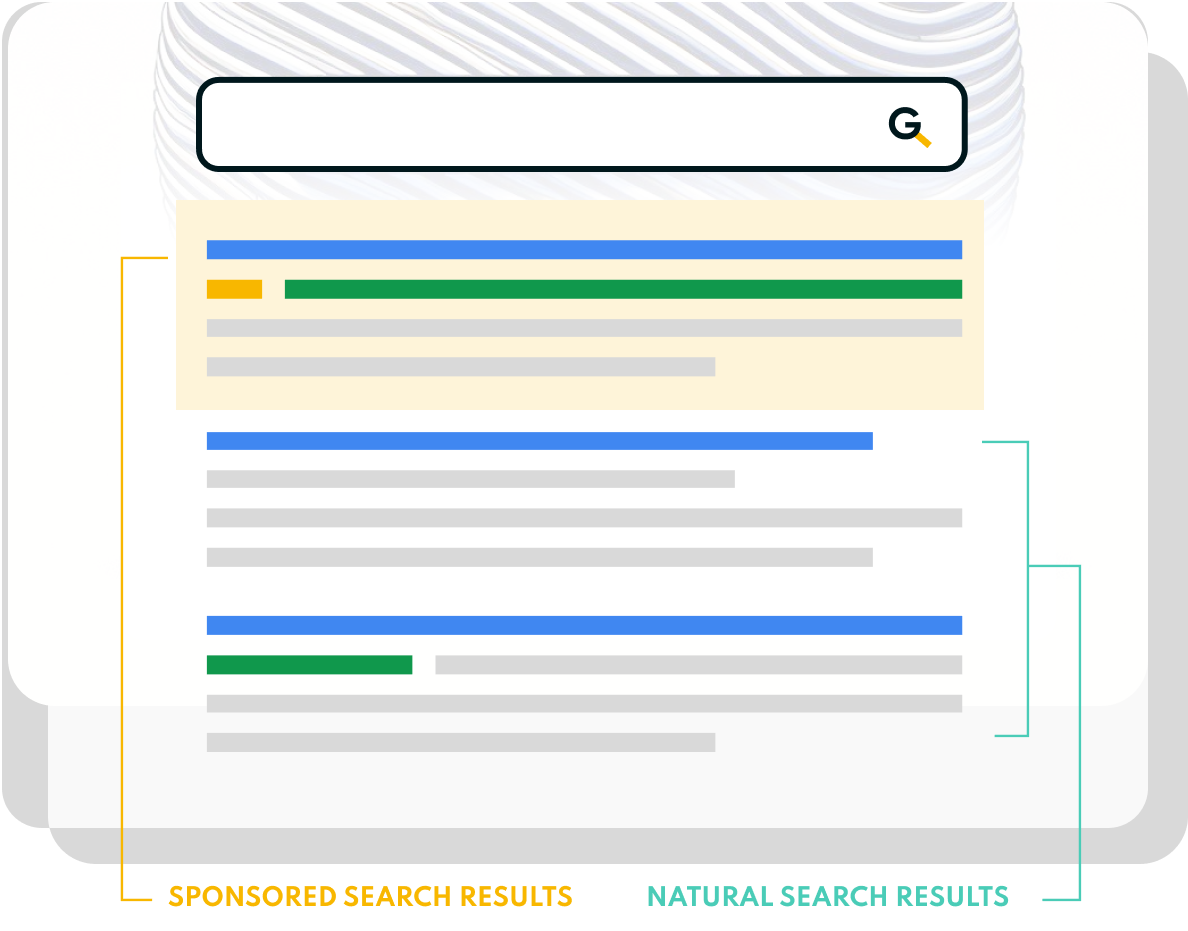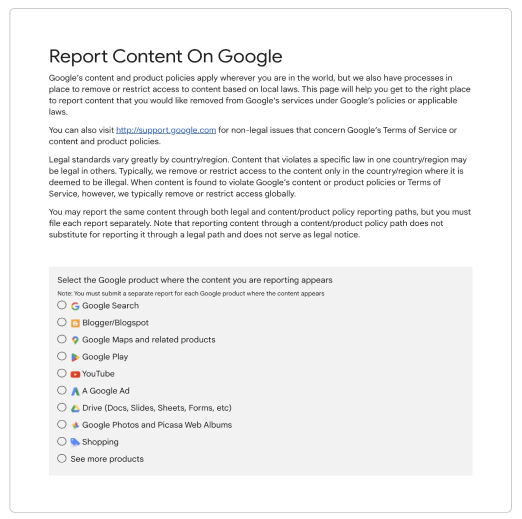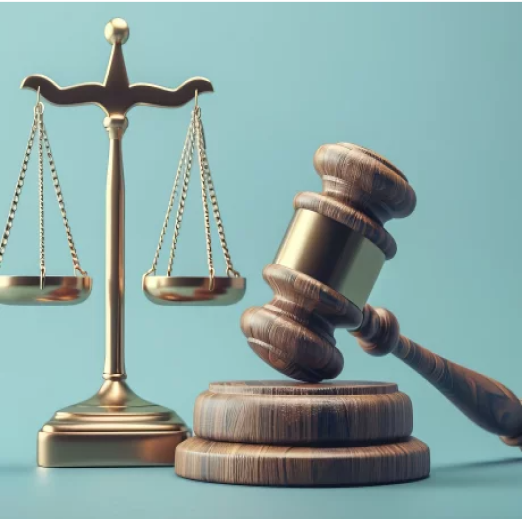I’m Ross Kernez—your trusted expert in Reputation Management for Financial Advisors. With over fifteen years of experience, I help high-net-worth families and their advisors protect their name, navigate public scrutiny, and maintain a discreet yet credible online presence. My proactive strategies go beyond crisis control, focusing on long-term reputation stewardship that reflects your values, governance, and generational legacy.
Online Reputation Management for Jewelers
I’m Ross Kernez, a Reputation Management Consultant with over 15 years of experience helping jewelers protect and enhance their online presence. I specialize in Online Reputation Management for Jewelers—removing or suppressing negative content, correcting inaccurate information, and promoting stories that reflect your craftsmanship, trustworthiness, and commitment to excellence.
Whether you’re a boutique artisan or a multi-location retailer, I ensure your digital footprint builds confidence with buyers and reflects the quality behind your brand.
Online Reputation Management for Jewelers

as seen on
We can Help You to Establish Your Online Presence or Remove Negative Search Results
Speak With an Expert
Do you need online reputation management for jewelers?
| Option | Effectiveness | Cost |
| #1.Waiting For Negative Articles To Fall Off | Low | Free |
| #2.Submit a DMCA Complaint | Low | Free |
| #3. Hire a Reputation Expert ⭐️Ross Kernez | High | $$ |
| #4. Reaching Out To Journalists | Low | Free |
| #5. Explore Legal Strategies | Medium | $$$ |
| #6. Requesting an Update To a Negative Article | Low | Free |

What are Search Results?
Search results refer to the list created by search engines in response to a query. Search results can be broken down as follows:
Natural search results
(usually on the left-hand side of search engine’s results page) and;
Sponsored search results
(usually on the top and right-hand side of a search engine’s results page). Here you will see websites that have placed PAID ads within the search engine.


Who is Ross Kernez?

Why you should remove negative content online
Our feedback Reviews

How to suppress negative information about you in
Whether you’re battling FUD, fake reviews, or misinformation, I build a stronger online presence that reflects the integrity of your project. Let’s make sure your name—or your token—commands confidence and credibility from page one of Google.
Let's Dive Deeper on How online reputation management works for jewelers
First, we flood Google with fresh, high-authority coverage your audience can trust—think thought-leadership columns, verified interviews, strategic press releases, and marquee collaborations on publications Google already ranks well in Search and beyond, all optimised for the search terms tied to your name. Next, we harden every digital property you own: your website, bio pages, and social profiles are tightened technically, updated often, and cross-linked so they broadcast relevance and authority. If a news article gets the facts wrong, we lodge a tactful correction with the editor; if content crosses the line into defamation or privacy abuse, we issue formal takedown or de-index requests on solid legal grounds. Finally, we keep a steady drumbeat of positive press and social engagement flowing, so fresh wins rise to the top while outdated or hostile links sink deep into the results—well past page one, where they’re all but invisible.

Because Google elevates fresh, authoritative coverage, a single negative headline from a major outlet can vault to the top of your search results—and stay there—simply by virtue of the publisher’s credibility and the story’s recency. That means every new article or broadcast mention effectively renews the shelf-life of the unfavorable narrative, forcing it back onto Page 1 each time it’s updated, syndicated, or quoted. The only reliable countermeasure is to meet Google’s relevance signals with an equally timely stream of positive, high-authority content: an exclusive interview in a respected magazine, a feature on your philanthropic work, or a verified announcement on a well-trafficked platform. By continuously injecting fresh, newsworthy material that reflects your true accomplishments, you can dilute the impact of isolated negative pieces, shift the conversation, and gradually reclaim the real estate at the top of the results page—where first impressions are formed.

Why Google Ranks News Very High in Search?
#1. Waiting For Negative Articles To Naturally Fall Off The First Page
In a competitive investment climate, waiting for negative press to fade on its own is a risk no serious blockchain project should take. If a harmful article or forum thread continues to gain engagement, its visibility won’t fade—it stays on page one, undermining investor confidence and delaying funding.
Our reputation management experts proactively protect your brand. We publish investor-friendly, trust-enhancing content in Arabic and English, fine-tune your digital footprint, and take swift action when your name surfaces in the wrong context. With constant monitoring and precision SEO, we ensure damaging narratives are buried, and your blockchain vision remains the focus.

#2. Submit a DMCA Takedown Notice on Google
When a regional news outlet or global blog republishes your proprietary content without permission, taking swift action is critical to protect your brand. Start by collecting the infringing URLs and capturing dated screenshots or archived versions that clearly show your ownership. Then, visit Google’s copyright-removal portal (support.google.com/legal/troubleshooter/1114905) and select the appropriate product—Search, YouTube, Images, and more. Fill out the form with your contact information, a detailed description of your original work, the infringing links, and a sworn statement asserting your rights. Google will evaluate your claim and may request additional documentation—so be prepared to respond promptly. Once approved, the offending URLs will be deli

#3. Hire an SEO Expert
When you partner with crypto-focused reputation strategist Ross Kernez, you gain an expert who knows how to influence search results and control the narrative in a volatile digital landscape. Ross applies a multi-layered strategy—bilingual news placements, purpose-built microsites, high-impact press releases, and synchronized social media efforts—designed to elevate your credibility while suppressing FUD, outdated articles, and hostile forum posts. Every action is custom-built: Ross audits the keywords, platforms, and publishers that shape perception in the crypto space, then powers a content engine that brings your best press forward and moves harmful links out of sight.
Outsourcing this mission isn’t just smart—it’s critical. In the 24/7 world of crypto, your name or project can trend for the wrong reasons in seconds. Reputation management here demands constant vigilance, deep SEO expertise, and messaging that aligns with both mainstream media and blockchain-native communities. With Ross managing your onli

#4. Reaching Out To Journalists
Reaching out to a journalist—or any media outlet—to address unfavorable crypto-related coverage requires tact, professionalism, and a clear, evidence-backed approach. Start by identifying the reporter and publication, then review their correction or update policies to ensure your request aligns with their editorial standards. In your personalized message (avoid templates), acknowledge the journalist’s role in fair reporting and clearly explain—supported by concise, verifiable proof—why the article is outdated, misleading, or factually incorrect. Include documentation or recent developments that reflect the full, current picture. If the facts are technically accurate but the context has shifted, consider suggesting an update that highlights recent achievements or progress. Offering an exclusive quote, interview, or dataset can turn your request into a value-added opportunity for the reporter.
Throughout the exchange, maintain a respectful and cooperative tone. Journalists are under no obligation to revise or remove content, and collaborative engagement is often more productive than confrontation. If the outreach yields no result, incorporate it into a wider crypto reputation strategy—whether that involves legal guidanc

#5. Explore Legal Avenues
Taking a publisher to court under defamation or cyber-crime laws may seem like a straightforward solution, but legal action rarely results in the clean slate most crypto founders and brands envision. Lawsuits can be expensive, drawn-out, and mentally draining—often lasting months or years with no guarantee that the harmful content will be taken down. Worse, filing a case can unintentionally reignite attention, as media outlets report on the lawsuit itself, amplifying the very content you aimed to suppress through what's known as the Streisand effect. The legal bar is high: you must prove that the statements are false, damaging, and made in bad faith—an uphill battle, especially when dealing with opinion pieces or vague allegations. Even a courtroom win can leave the article online, now accompanied by headlines about the legal dispute, and may damage future relationships with reporters who view the move as overly aggressive.
A more strategic approach for crypto companies and leaders is proactive online reputation management. By addressing inaccuracies directly with editors, publishing factual and trust-building narratives in multiple languages, and populating search results with authoritative, positive content, you can reshape public perception—quietly and effectively. This forward-thinking strategy not only protects your digital footprint today but also preserves the goodwill and press relationships

#6. Requesting an Update To An Article To Remove Negative Results
When requesting an update from a journalist covering your crypto project, lead with professionalism, transparency, and solid evidence—not confrontation. Begin your outreach by acknowledging the reporter’s role and commitment to accuracy, then present clear, verifiable proof that the article is outdated, misleading, or incomplete. Strengthen your case with updated data, recent milestones, or new context the original piece may have missed—ideally available in multiple languages for added clarity and accessibility.
Position your request as a mutual effort to maintain factual accuracy, not an attempt to suppress coverage. This collaborative tone encourages goodwill and makes it easier for the journalist to revisit and refine the story. The result is a more balanced piece that protects your reputation, enhances the outlet’s credibility, and helps shift negative search results further down the page—supporting a more favorable digital presence in the highly scrutinized crypto space.

Who We Work With
We provide search suppression services for both individuals and corporations .
Below are some of the types of clients we've been able to work with over the years:
Individuals
1. Celebrities
2. Musicians
3. Politicians
4. Authors
5. Non-public individuals
Business
1. Fortunate 500 companies
2. CEOs & executives
3. Business crises
Advanced Tracking Technology
Our tailored suppression process is supported by advanced tracking technology, specifically designed for our search suppression services. This custom-built solution enables seamless monitoring of your campaign's performance and progress.
Key features of our technology include:
Analyzing sentiment associated with search results
Providing a comprehensive sentiment score
Tracking a wide range of brand-related keywords
Monitoring search results across various locations
With our proven suppression strategies, we effectively pushed negative content off the first page of Google search results.
We can help you push down negative results and secure positive news coverage in 146 countries and 51 languages
All countries
Europe
North America
Central America
South America
Asia-Pacific
Middle East
Africa
Central Asia
Kazakhstan
Mexico
France
U.S.
Serbia
Bangladesh
Bosnia and Herzegovina
Venezuela
Pakistan
U.A.E.
Switzerland
Hungary
Turkey
Romania
India
Spain
Kyrgyzstan
Kenya
Georgia
Vietnam
Slovakia
Peru
Chile
Belgium
Indonesia
Argentina
Germany
Poland
China
Estonia
Azerbaijan
Norway
Lithuania
Nigeria
Austria
Denmark
Portugal
Canada
Italy
U.K.
Malaysia
Finland
Uzbekistan
South Africa
Croatia
Bulgaria
Czech Republic
Australia
Netherlands
Brazil
Ukraine
Moldova
Singapore
Egypt
Philippines
Latvia
Japan
Sweden
Colombia
France
Serbia
Bosnia and Herzegovina
Switzerland
Hungary
Romania
Spain
Georgia
Slovakia
Belgium
Germany
Poland
Estonia
Norway
Lithuania
Austria
Denmark
Portugal
Italy
U.K.
Finland
Croatia
Bulgaria
Czech Republic
Netherlands
Ukraine
Moldova
Latvia
Sweden
Mexico
U.S.
Canada
Venezuela
Peru
Chile
Argentina
Brazil
Colombia
Bangladesh
India
Vietnam
Indonesia
China
Malaysia
Australia
Singapore
Philippines
Japan
U.A.E.
Turkey
Azerbaijan
Egypt
Kenya
Nigeria
South Africa
Pakistan
Kyrgyzstan
Uzbekistan
FAQs
How to Suppress Unwanted News?
What is online reputation management (ORM) for interior designers?
Online reputation management for interior designers is the strategic practice of monitoring, shaping, and enhancing your digital presence across search results, reviews, and social media. It involves tracking mentions of your brand, addressing negative feedback, and amplifying positive content that showcases your design expertise. Effective ORM ensures that potential clients see an accurate, inspiring portrait of your work when they search for you. By proactively managing your reputation, you safeguard your credibility and differentiate yourself in a crowded market. This continuous process helps convert online interest into real‑world projects.
Why is ORM critical for interior designers?
Word‑of‑mouth referrals now happen online through reviews and social media more than ever before. A few negative comments or outdated photos can undermine years of creative work and client relationships. Prospective clients often decide whom to contact after a single Google search, making first impressions vital. ORM protects and elevates your brand narrative so your best projects shine. Ultimately, it drives higher‑value inquiries and sustained growth.
How does ORM differ from traditional public relations (PR)?
PR focuses on media outreach, press coverage, and brand storytelling in external publications. ORM centers on the search results, ratings, and user‑generated content that appear when someone looks you up online. Both disciplines complement each other, but ORM directly controls and optimizes what prospective clients see first. By integrating PR wins into ORM efforts, designers can amplify credibility across multiple channels. The result is a cohesive, authoritative digital footprint.
What are the main components of an ORM strategy for interior designers?
A robust ORM plan includes monitoring brand mentions, optimizing portfolios and profiles, managing reviews, and producing positive content. It also addresses negative or false information through suppression, removal, or legal channels when appropriate. Social media engagement, SEO, and visual storytelling round out the mix. Combined, these elements present a consistent, compelling online identity. Continuous analysis ensures the strategy evolves with your business goals.
Can negative reviews be removed or hidden?
Certain platforms allow removal if the review violates their policies or contains defamatory statements. When removal isn’t possible, strategic suppression can push harmful content off the first page of search results. Crafting thoughtful, professional responses can also neutralize the impact of mild criticisms. Encouraging satisfied clients to leave authentic feedback further dilutes negativity. Over time, the positive outweighs the negative, restoring confidence.
What steps are taken to address false or defamatory claims?
First, an assessment determines if the claim violates platform rules or defamation laws. If so, we collect evidence and file removal requests or legal notices as needed. Concurrently, we publish accurate information and showcase verified successes to correct the public record. Structured outreach to trusted media or design blogs can further clarify the truth. This balanced approach resolves disputes while maintaining professionalism.
How long does it take to see results from ORM efforts?
Initial improvements often appear within 30 to 60 days, such as new positive content ranking higher. More entrenched issues—like long‑standing negative articles—may require three to six months to shift. Continuous monitoring ensures setbacks are addressed promptly. ORM is an ongoing commitment rather than a one‑time fix. Sustained effort keeps your reputation aligned with your evolving portfolio.
What types of content help boost an interior designer’s reputation?
High‑quality project photos, detailed case studies, and client testimonials build credibility. Behind‑the‑scenes videos and design process explainers humanize your brand. Guest articles in design magazines position you as an authority. Social proof through awards or certifications reinforces expertise. Collectively, these assets create a multifaceted, trustworthy presence.
How does social media factor into ORM?
Social platforms are often the first touchpoint for prospective clients exploring a designer’s aesthetic. Consistent posting of polished visuals and insightful captions strengthens brand identity. Prompt, professional responses to comments demonstrate attentiveness. Platforms also serve as real‑time reputation monitors, revealing emerging issues early. Integrated social strategies therefore reinforce broader ORM objectives.
Do you handle Google My Business (GMB) optimization?
Yes, optimizing GMB is foundational for local visibility and credibility. Accurate contact details, service categories, and geo‑tagged project photos improve search rankings. Regular posts and prompt review responses boost engagement signals Google values. Analytics from GMB also guide content decisions. A well‑maintained profile converts local searches into consultations.
How are positive press mentions leveraged in ORM?
Press coverage is repurposed across your website, social media, and pitch decks. Structured data markup ensures articles appear as rich results in Google. Quotes and logos from publications serve as trust badges that elevate perceived authority. Press excerpts can also anchor blog posts and email newsletters. This integrated approach maximizes every media win.
What should I do if a competitor copies my designs online?
Document and timestamp the original work to establish ownership. Issue takedown notices under copyright law when infringement is clear. Publicly, showcase your authentic process to reaffirm originality without escalating conflict. ORM tools then push rightful content higher in search visibility. Consistent branding discourages future copycats by making your style unmistakable.
How do you gather authentic client testimonials?
We create a streamlined, branded feedback request that guides clients through leaving detailed reviews. Timing the ask shortly after project completion captures enthusiasm. Video or photo testimonials add credibility and visual appeal. We also verify testimonials to ensure compliance with platform guidelines. These authentic voices become cornerstone content for ongoing ORM.
Is ORM only necessary after a crisis?
Preventive ORM builds a strong digital foundation before issues arise. Proactively curated content and solid review histories make negative events less damaging. Early monitoring detects potential problems, allowing swift response. Continuous engagement keeps your brand top‑of‑mind for happy past clients. Therefore, ORM is both a shield and a growth accelerator.
How much does ORM cost for interior designers?
Pricing depends on the complexity of your situation, current online footprint, and desired aggressiveness of strategy. Projects with minor cleanup and brand building are less resource‑intensive than crisis recovery. Monthly retainers cover monitoring, content creation, and ongoing optimization. Custom packages ensure alignment with your business goals and budget. Transparent reporting details ROI throughout the engagement.
What metrics indicate a successful ORM campaign?
Key indicators include improved search rankings for branded keywords, higher average review ratings, and increased positive media placements. Tracking website inquiries and conversion rates links ORM to revenue. Social sentiment analysis reveals shifts in public perception. Elastic metrics like share of voice illustrate competitive positioning. Collectively, these data points validate strategy efficacy.
How do you keep my personal and client information private?
We follow strict confidentiality agreements and secure data protocols. Sensitive project details are anonymized unless you grant explicit permission. Communication channels are encrypted to protect design concepts and client lists. Only authorized team members access your account. This commitment safeguards both your reputation and your clients’ privacy.
Will engaging in ORM make my online presence look inauthentic?
Authenticity remains central to effective ORM; we highlight genuine accomplishments and real feedback. Content is crafted in your voice, reflecting your design philosophy. All testimonials are verified, avoiding fabricated reviews. Transparent storytelling fosters trust rather than superficial polish. The goal is to amplify truth, not manufacture it.
Can ORM help me win design awards?
While ORM doesn’t directly grant awards, it elevates your visibility and perceived credibility among judges and publications. A clean, authoritative online presence underscores the quality of your submissions. Positive press and client praise create a narrative of excellence. Enhanced brand recognition often leads to more invitations to enter competitions. Thus, ORM indirectly increases award‑winning potential.
What role does search engine optimization (SEO) play in ORM?
SEO ensures that positive assets rank higher than negative or irrelevant content. Keyword‑optimized case studies and image alt text improve visibility for services like “luxury interior designer.” Back‑linking from reputable design sites bolsters authority signals. Technical SEO fixes—such as site speed improvements—enhance user experience, reinforcing credibility. Together, SEO and ORM form a cohesive digital strategy.
How often should my reputation be monitored?
Daily monitoring detects and addresses issues before they escalate. Weekly analytics reviews reveal trends in search rankings and sentiment. Monthly strategy sessions adjust tactics based on data. In fast‑moving design markets or during high‑profile projects, real‑time alerts add an extra layer of protection. Consistent vigilance sustains long‑term reputation health.
What happens if I receive a negative social media comment during a live event?
Swift, calm acknowledgment shows professionalism. If misinformation is present, clarify facts respectfully and invite offline discussion. Positive supporters often rally when you handle criticism gracefully. Afterward, evaluate whether further action—like a private follow‑up or formal statement—is needed. Continuous monitoring ensures similar incidents are managed consistently.
Does ORM include crisis communication planning?
Yes, developing a crisis response blueprint is integral to comprehensive ORM. The plan outlines key messages, spokesperson roles, and approval workflows. Prepared templates expedite response times when seconds matter. Training sessions equip your team to handle media inquiries confidently. This readiness minimizes reputational fallout during unforeseen events.
How can I showcase sustainability commitments through ORM?
Publishing case studies on eco‑friendly projects highlights green credentials. Certifications and partnerships with sustainable suppliers add third‑party validation. Social media series on sourcing practices humanize your efforts. Press outreach to environmental design outlets further amplifies impact. Consistent messaging builds a reputation aligned with conscious design values.
Can ORM help expand into new markets or niches?
Localized SEO and targeted content position you as an expert in specific regions or sectors. Showcasing niche projects attracts similar opportunities. Positive coverage in publications relevant to the new market establishes authority quickly. Reputation audits ensure cultural nuances are respected. Consequently, ORM becomes a springboard for strategic growth.
What legal considerations exist in ORM for interior designers?
Copyright and trademark laws protect your original designs and brand assets. Defamation laws apply when false statements harm your reputation. FTC guidelines govern disclosure in sponsored content and testimonials. Understanding platform‑specific review policies helps avoid accidental violations. Collaborating with legal counsel ensures all actions comply with relevant regulations.
How do visuals influence online reputation?
High‑resolution images communicate quality and professionalism instantly. Consistent editing styles and branding create a recognizable aesthetic. Alt text and file names optimized for SEO improve search visibility. Interactive lookbooks and 3D walkthroughs engage visitors, extending time on site. Visually compelling content thus strengthens both perception and performance.
Is it possible to track ROI on ORM efforts?
Attribution models link reputation improvements to tangible metrics like lead volume and project value. Comparing inquiry sources before and after ORM initiatives reveals growth patterns. Funnel tracking measures how often prospects who research your name convert into consultations. Client feedback surveys gauge sentiment shifts. These data points collectively demonstrate financial returns.
How do you ensure ongoing alignment with my brand voice?
We begin with an in‑depth discovery session to define your tone, design philosophy, and target audience. Style guides inform all written and visual content. Regular check‑ins allow fine‑tuning as your portfolio evolves. Feedback loops guarantee every piece of content feels authentically “you.” This collaboration maintains consistency across all touchpoints.
What happens after the initial ORM engagement ends?
You receive a detailed roadmap for maintaining gains, including content calendars, monitoring tools, and review request templates. Optional retainer packages keep us on call for emerging challenges. Training sessions empower your team to handle day‑to‑day reputation tasks confidently. Periodic audits can be scheduled to assess progress. Continued vigilance ensures your digital presence stays an asset, not a liability.
